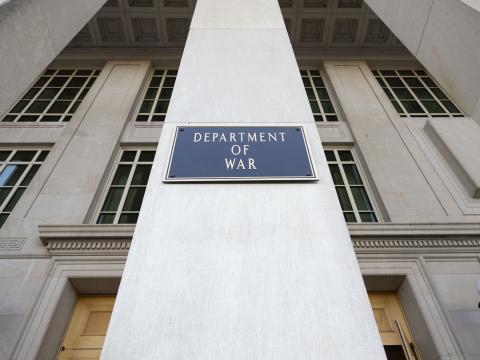A Plan With a Purpose
The Defense Information Systems Agency (DISA) has released its 2010 Campaign Plan. Although designated as this year’s plan, the document actually lays the groundwork for DISA activities that will take place during the next two to five years. While it may appear ambitious, the agency’s officials believe that it is absolutely necessary to reach beyond DISA’s grasp as it heads into the future.
Maj. Gen. Ronnie D. Hawkins Jr., USAF, vice director, DISA, says the agency understood that it needed long-term solutions; however, the first step had to be to create a road map that outlines its primary goals. One of the top priorities is mapping out the existing platforms across the U.S. Defense Department and DISA, which currently exist as stovepipes. Processes must be broken down so that agency personnel can examine tactics, techniques and procedures; policies; and its business model. The goal is to determine how best to integrate the platforms that the organizations use.
"When you look at industry, that's a three- to five-year journey. It’s why I say this is not something that is going to happen overnight. But you need the structures/road map in place to get going, and that's what the campaign plan does for us," Gen. Hawkins says.
Under the agency’s seven guiding principles, the plan is organized along three lines of operation—enterprise infrastructure, C2 and information sharing, and operate and ensure—that are subdivided into nine joint enablers. Among the nine joint enablers are acquisition, information and knowledge management, people, planning and resources.
Although the plan features strategic objectives and specific priorities, the published plan does not include the metrics by which to measure its success; however, the general says that these specifics are in the full document that DISA is using as it moves forward.
Gen. Hawkins relates that acquisition is certainly among the DISA director's top priorities. He says that he and Lt. Gen. Carroll F. Pollett, USA, DISA’s director, have recently talked about how the agency must ensure that the "entry fee" to using DISA as a resource is not a choking point. The generals are scheduled to discuss how to change policies and take advantage of a working capital model early this month, Gen. Hawkins notes.
Traditional policies have been singled out as an impediment to improving the acquisition process. For DISA, one of the challenges is being totally transparent about the cost of its procedures. Although the agency’s prices may appear to be higher than commanders expect, in fact they are by and large realistic regarding the total cost of a capability or service, he offers.
"The acquisition business model has to change. My position is that we have to start working this from the entry-level cost. It has got to go down; we've got to get it down, which means we've got to attack how and what it is that we show, what it is that we use, but more importantly the policies and the regulations that we are [must operate] under to come up with our derivative costs," the general states.
"It goes back to that total cost. We have got to figure out how everybody recognizes that total cost. And, usually, when you are looking at it from a [military] services perspective, most of the services—while they are running a server somewhere on a military installation—don't take the electricity, the security of the building into the lines of their business model. Well, they need to because that is a cost that is tied to that server being protected from the physical location all the way to network security," he adds.
One of the challenges that DISA is perceptions. Some staff members believe that their jobs are in jeopardy, when in fact the agency actually will be using their expertise in different ways. A second challenge will be discerning whether it should use open source resources or only a few toolsets as it prepares to integrate the various network stovepipes into one infrastructure, the general relates.
DISA also must find a solution to one problem that has been plaguing the military and most government agencies for years: cross-domain information sharing and security. The agency knows that it must improve in this area and recognizes the benefits of addressing this issue once and for all, but this problem is another example of how traditional policies get in the way of using the latest technologies, Gen. Hawkins notes.




Comments